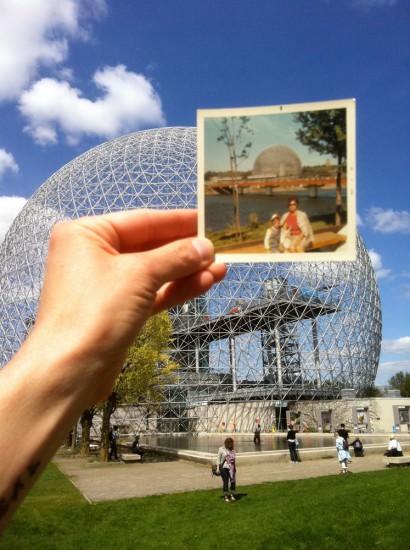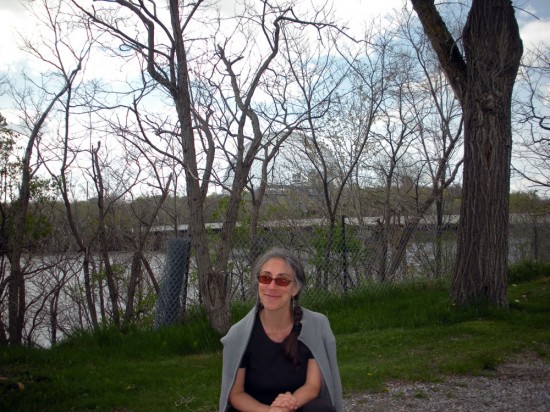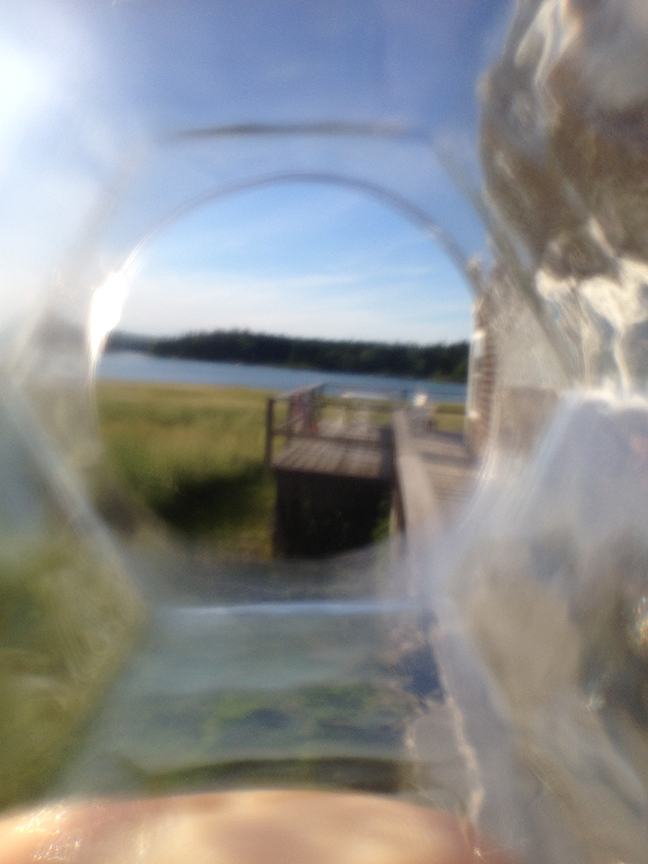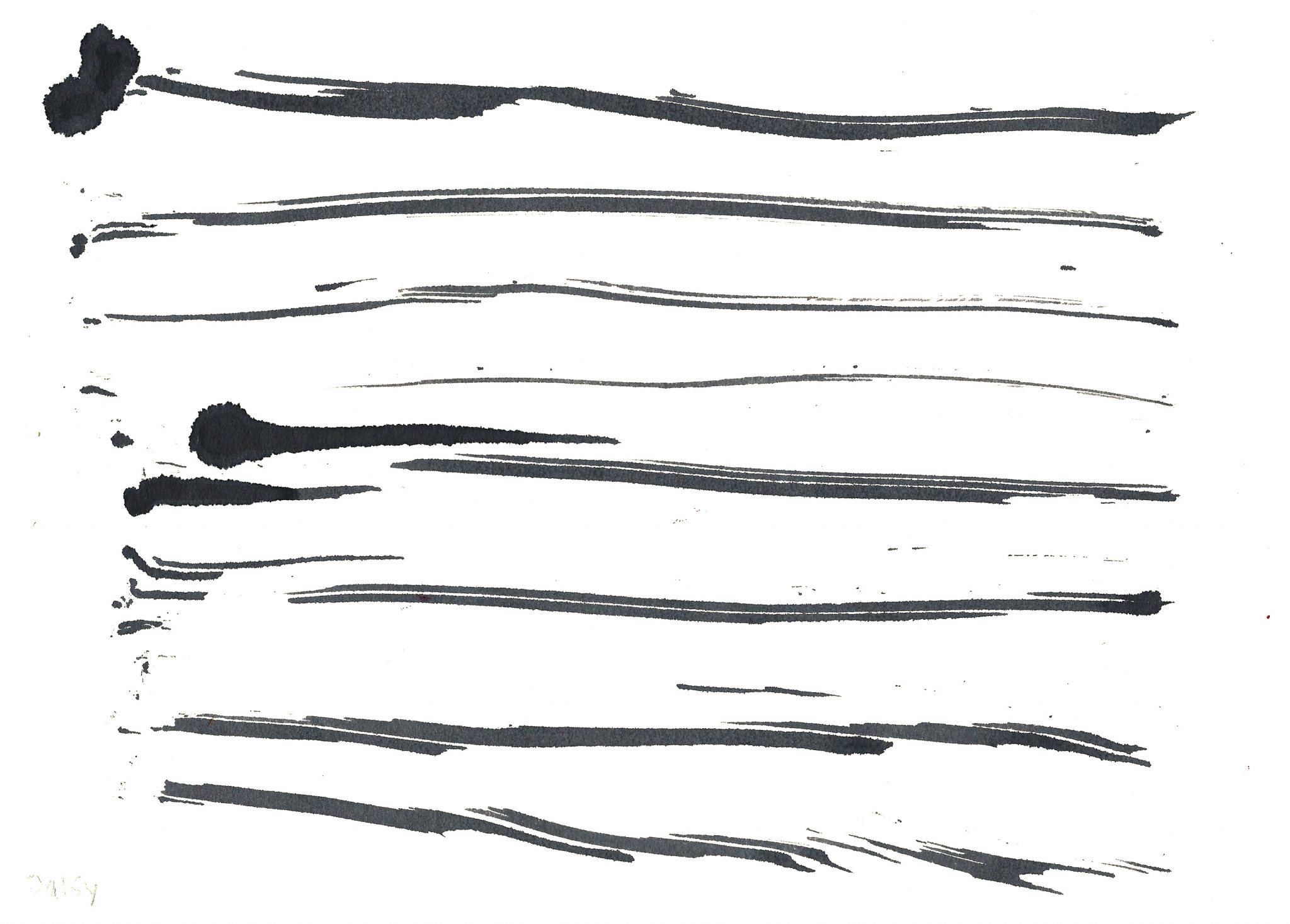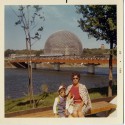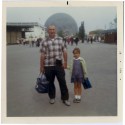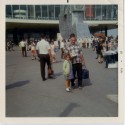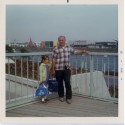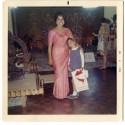DesignCity: Montréal presented me with an opportunity to reflect upon early memories of Expo 67 through the ephemeral residue of family photographs. Studying the visual cues, posture, and dress within the images, I was able to recreate decades-old experiences that transported me back to my childhood self. While scant evidence remains of the old Expo site, newfound friends in 2011 assisted me in recapturing personal connections and charged emotions through recreation of past events. The following journal entries document this reconciliation.

On the train from Rhinebeck, NY to DesignCity: Montréal, 7 May 2011
Judging entirely through observation of five family photographs, it appears that:
- Four of the five images were taken by Eema (Hebrew for “mother”) and one by Daddy. Eema shot with the subject large and firmly centered; Daddy shot with an eye toward landscape.
- We visited on two consecutive days, which confirms my memories. I wore the same pinafore (made by Eema), but a different white shirt each day: one long-sleeved crew neck tee shirt, one Peter Pan-collared white cotton blouse.
- One day was sunny, one was overcast.
- We went alone, though at the time, we had more than 60 relatives from Lithuania and Bombay living in Toronto. They had all already visited Montréal.
- Eema’s scrawled “September 1967” on the back of one image dates our visit. The date stamp on the front side of the prints indicates that the photos were developed and printed that November.
- Extrapolating from Daddy’s height in relation to mine in the photos, I estimate that I was about 3’8” tall (he was 5’6”).
- I seem okay. Not happy (and my parents were not smile-for-the-camera people), but okay.
- I was carrying a lot of stuff: my little white purse, an Expo 67 bag (branded with Optima type), red-and-white kova tembel (colloquial Hebrew: “fool’s hat,” a kind of dated national symbol) and sunglasses. I look like a small version of my mother. Note to self: Does my daughter Gia look like a small version of me? Do I hope not?
What I remember:
- I clearly remember Eema taking my picture with the lady in the pink sari in the Indian pavilion. I was shy and a bit awkward and tilted my head toward the right, coming in beneath the young woman’s left breast. She was really pretty. None of my Indian aunties wore saris.
- I was excited about the size and shape and construction of the geodesic dome and worried about getting contaminated by being so close to the lunar module.
What I know:
- I am older now than my parents were in these photographs.
Field trip to Expo 67 fair grounds, Montréal, 10 May 2011
I was looking forward to visiting the Expo site, but also ambivalent about planning ahead for what I would do once we arrived. An unexpected jolt of connection hit when the group took the escalator up at the Jean Drapeau metro station. The extremely horizontal and flat space that met us at the top held some memories of excitement and anticipation.
Instinctively, we walked toward Buckminster Fuller’s geodesic dome trying to orient ourselves. The grounds seemed more empty to me than neglected. Was I walking through a dream? I felt emotional but distanced—the same sort of spatial relationship to sensation one feels toward pain after taking a Valium.
Our group the dome, but couldn’t get very far without paying an admission fee. The interior space had been altered with a drop ceiling so we couldn’t see the roof from within the structure.
Chris [Moore] pulled out a book with original Expo images that sparked some memories: yes, the dome was originally open, with two escalators reaching up to a shelf-like half-floor housing the US space program exhibit. Visitors snaked up one escalator, walked through the exhibit, and then went down the other escalator. That resonated with me. I remembered my own trip up, through, across, and down the pavilion, and how I felt looking up, up, up into the cavernous dome.
After exiting the dome, Stuart [Henley] noticed my lack of energy. I felt overwhelmed and flat at the same time. He mobilized a small group: me, Margo [Halverson], Tim [Vyner] and Gail [Swanlund], to find the precise site Daddy had photographed Eema and I 44 years prior. We walked across the bridge and along the edge of the water. When consensus had been reached—this is the spot!—I crouched on the ground to pose for the photo.
Stuart’s impetus, plus Margo’s, Tim’s and Gail’s enthusiasm for that moment touched me. I felt vulnerable, cried a bit, and shared hugs all around. In the photo I look the way I felt in the moment: aging, head in the past, thinking about my childhood-self and my parents, grateful and a bit awkward with the attention.
This was not a “good” photo of me, but a really GOOD photo.
